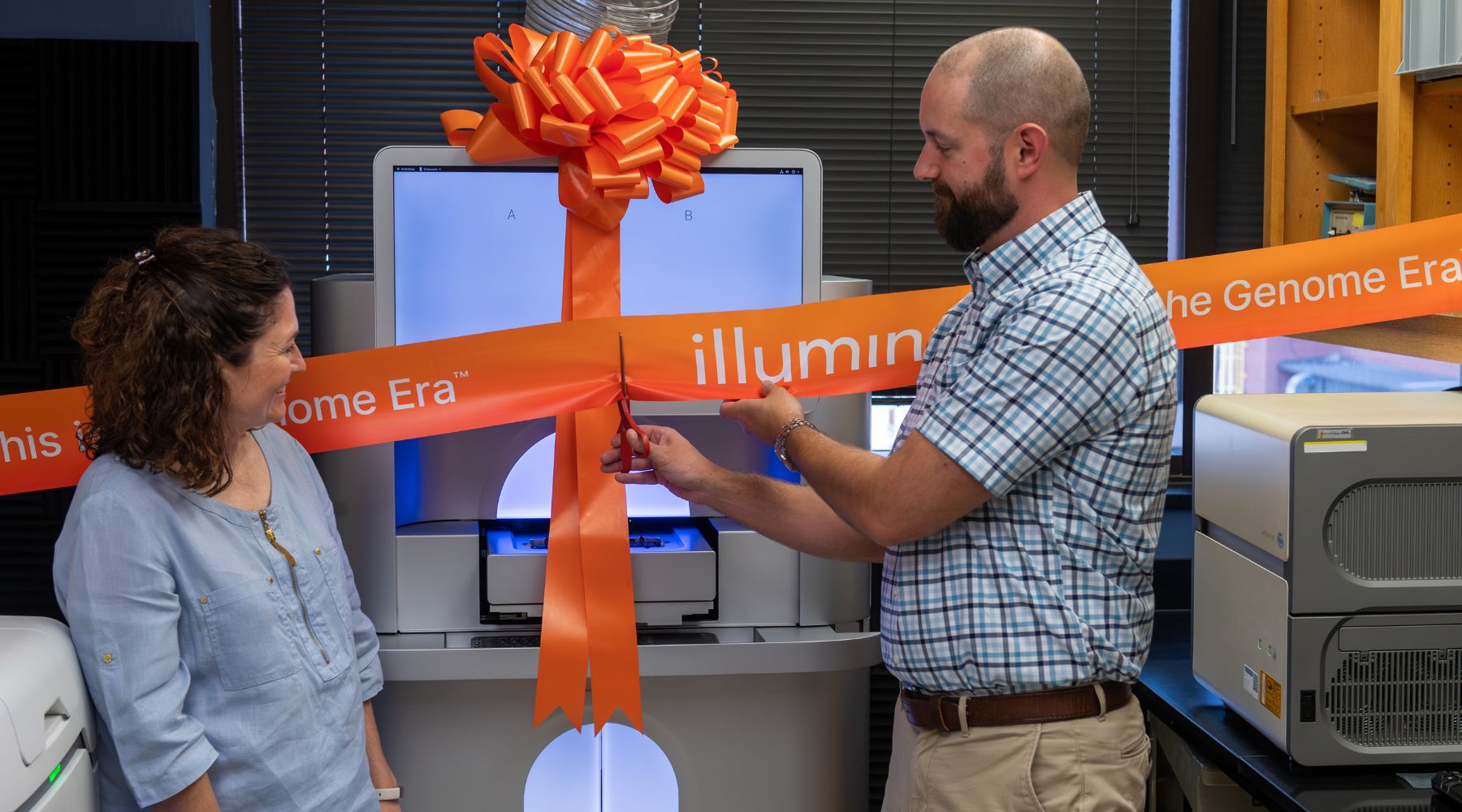The Oklahoma Medical Research Foundation now has one of the world’s fastest DNA sequencers, paving the way for greater insights into everything from Alzheimer’s disease to cancer and cardiovascular disease.
The refrigerator-sized Illumina NovaSeq X Plus, delivered in June to OMRF’s Clinical Genomics Center, will cut the current sequencing cost per genome in half and increase the center’s overall throughput, said the center’s director, scientist Graham Wiley, Ph.D.
OMRF was one of the first academic centers in the U.S. to receive the system. The foundation’s previous system could sequence 8,000 human genomes per year. The NovaSeq X Plus can sequence 20,000 human genomes per year.
“This enables less expensive and faster delivery of genetic data for understanding and treating diseases,” Wiley said. “I believe the cost savings resulting from this technological advance are going to unlock a new era of science.”
Genomic sequencing is a lab procedure capable of determining the entire genetic makeup of a specific organism or cell type. The idea has been around since the 1970s, but the first sequencing of an entire human genome has been possible only since 2003, following a 13-year, international effort to fully sequence all 3 billion bases – the letters of DNA that comprise the genome.
OMRF scientist Bill Freeman, Ph.D., relies on sequencing for Alzheimer’s research to create visualizations showing the effects of Alzheimer’s in research models.
“The more data we have, the more insights we can garner,” Freeman said. “With this new sequencer, we’ll get twice the data, which translates into better science.”
In addition to supporting OMRF scientists, Wiley also processes samples from research institutions across the U.S. and world for genomic studies.
“DNA sequencers of this caliber are generally clustered on the east or west coasts,” he said. “Having this capability at OMRF means Oklahoma researchers can keep their samples in-state and allows us to expand our support of scientists across the globe.”



